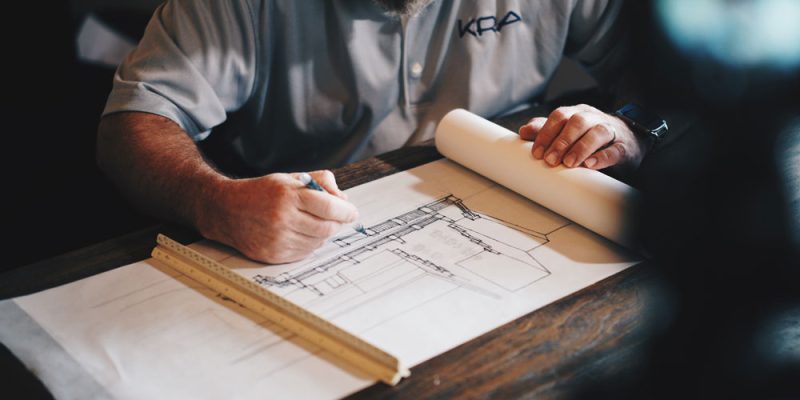Singapore is a city of firsts. It’s the epitome of urban innovation, seamlessly blending nature with cutting-edge design. But here’s the twist: the real game-changer isn’t just the skyscrapers or the gleaming buildings — it’s the top architects in Singapore who are driving the city’s commitment to sustainability. With environmental concerns rising globally, these architects aren’t just building for the future; they’re building for a greener, smarter, and more eco-conscious future.
In this post, we’ll dive into how Singapore’s top architects are leading the charge in sustainable architecture. These visionaries are not just designing buildings, but shaping an entire city’s future — one eco-friendly brick at a time. Let’s explore their role in pushing for sustainable architecture in Singapore.
1. Why Sustainability Matters in Urban Design
Before we get into the specifics of the top architects in Singapore, let’s take a step back and ask: why is sustainability such a hot topic in architecture?
The answer is simple — urban living has a massive environmental impact. As cities grow and populations increase, energy consumption, waste production, and the carbon footprint of buildings become ever more important. But the good news? Architects are in a prime position to change all that.
Sustainability in architecture means designing buildings that not only serve their purpose but also contribute to the well-being of the planet. This includes using eco-friendly materials, minimizing energy consumption, reducing waste, and incorporating natural elements into the design. And in Singapore, these concepts aren’t just an afterthought — they are core to the city’s development strategy.
2. Ming Architects: Blending Design with Sustainability
One of the leaders in Singapore’s sustainable architecture scene is Ming Architects, a firm that has consistently pushed the envelope when it comes to combining modern design with environmental responsibility.
Take their work on The Warehouse Hotel, for example. Ming Architects took a historic warehouse and gave it a modern twist while keeping sustainability front and center. The firm used eco-friendly materials and made design choices that minimized energy consumption. The result? A building that not only pays homage to Singapore’s past but also contributes to a greener future.
Ming Architects’ innovative approach is a perfect example of how top architects in Singapore are redefining what it means to be sustainable. They understand that sustainability isn’t just about green roofs and solar panels — it’s about creating spaces that enhance the environment and improve the quality of life for everyone.
3. Singapore’s Green Building Standards: A Model for the World
When it comes to sustainability, Singapore doesn’t mess around. The city-state has set ambitious goals for itself — and the top architects in Singapore are helping the country meet them.
One of the key initiatives that Singapore’s architects are embracing is the BCA Green Mark certification, which encourages sustainable building practices. This certification recognizes buildings that meet high standards of environmental sustainability in areas like energy efficiency, water conservation, and indoor environmental quality.
Top firms like WOHA and RSP Architects have mastered the art of designing buildings that not only look stunning but also meet Green Mark standards. These firms are leading the way with buildings that use renewable energy, optimize natural light, and incorporate efficient water systems. Their work is a testament to how architecture can be both beautiful and functional while being kind to the planet.
WOHA, for example, has designed iconic sustainable projects like Gardens by the Bay, where nature and architecture blend seamlessly. The park is a perfect example of how top architects in Singapore are integrating green technologies into their designs to create sustainable, eco-friendly spaces that benefit both people and the environment.

4. Innovative Materials and Technologies: Sustainability Beyond the Surface
Sustainability in architecture isn’t just about the final product — it’s also about the materials and technologies that go into the design process. Top architects in Singapore are constantly pushing the boundaries of what’s possible by experimenting with new materials and technologies that make buildings more sustainable.
For example, architects are increasingly using green concrete, a more eco-friendly alternative to traditional concrete, which reduces carbon emissions. Other sustainable materials include recycled steel, solar glass, and low-impact timber, all of which reduce the environmental footprint of a building.
But it’s not just about the materials themselves — it’s also about how the building performs. Smart technologies, like IoT sensors, help buildings manage energy consumption by monitoring and adjusting heating, lighting, and cooling in real-time. This ensures that the building uses just the right amount of energy, reducing waste and lowering operational costs.
Ming Architects is at the forefront of this movement, using innovative technologies and sustainable materials in their designs. They understand that being truly sustainable means going beyond just green features — it’s about adopting a holistic approach to design that integrates environmental responsibility at every stage.
5. Sustainability as a Lifestyle: Creating Eco-Friendly Communities
Sustainable architecture isn’t just about the buildings themselves; it’s about the communities they create. Top architects in Singapore are designing not just buildings, but entire eco-friendly neighborhoods that prioritize the well-being of their residents.
One such example is The South Beach, a mixed-use development designed by RSP Architects. The building features energy-efficient systems, green roofs, and water conservation measures, but it also creates a sense of community through its integrated public spaces and amenities. Residents can easily access green spaces, public transportation, and retail outlets, making the development a model of sustainable, urban living.
Architects are now looking at sustainability through a broader lens, designing entire ecosystems within cities that minimize waste, reduce energy consumption, and foster a sense of community. These eco-friendly communities are designed to not only reduce environmental impact but also improve the quality of life for everyone who lives in them.
6. The Future of Sustainable Architecture in Singapore
The future of sustainable architecture in Singapore looks brighter than ever, thanks to the tireless work of top architects who are committed to pushing the boundaries of design. But what does that future look like?
In the coming years, we can expect to see even more innovation in sustainable building practices. Architects are already experimenting with new technologies, such as 3D-printed buildings, solar-powered structures, and self-sustaining urban farms. As technology continues to evolve, so too will the ways in which we design and build our cities.
Singapore’s architects will continue to lead the way in integrating smart building technologies, renewable energy sources, and sustainable materials into their designs. But what’s even more exciting is how these architects are designing for the future, creating buildings and communities that will thrive for generations to come.
Conclusion: The Green Revolution in Singapore Architecture
The role of top architects in Singapore in pushing for sustainable architecture cannot be overstated. They are not just designing buildings — they are shaping the future of urban living by integrating sustainability into every aspect of their work. From historic preservation to cutting-edge technology, Singapore’s architects are proving that design and sustainability can go hand in hand.
As the world continues to grapple with environmental challenges, Singapore’s commitment to sustainable architecture is a shining example of how thoughtful, innovative design can help create a greener, smarter future. Thanks to the hard work and visionary thinking of firms like Ming Architects, WOHA, and RSP Architects, Singapore is well on its way to becoming a model for sustainable urban living.
The future of architecture is green — and Singapore’s architects are leading the charge.







Comments